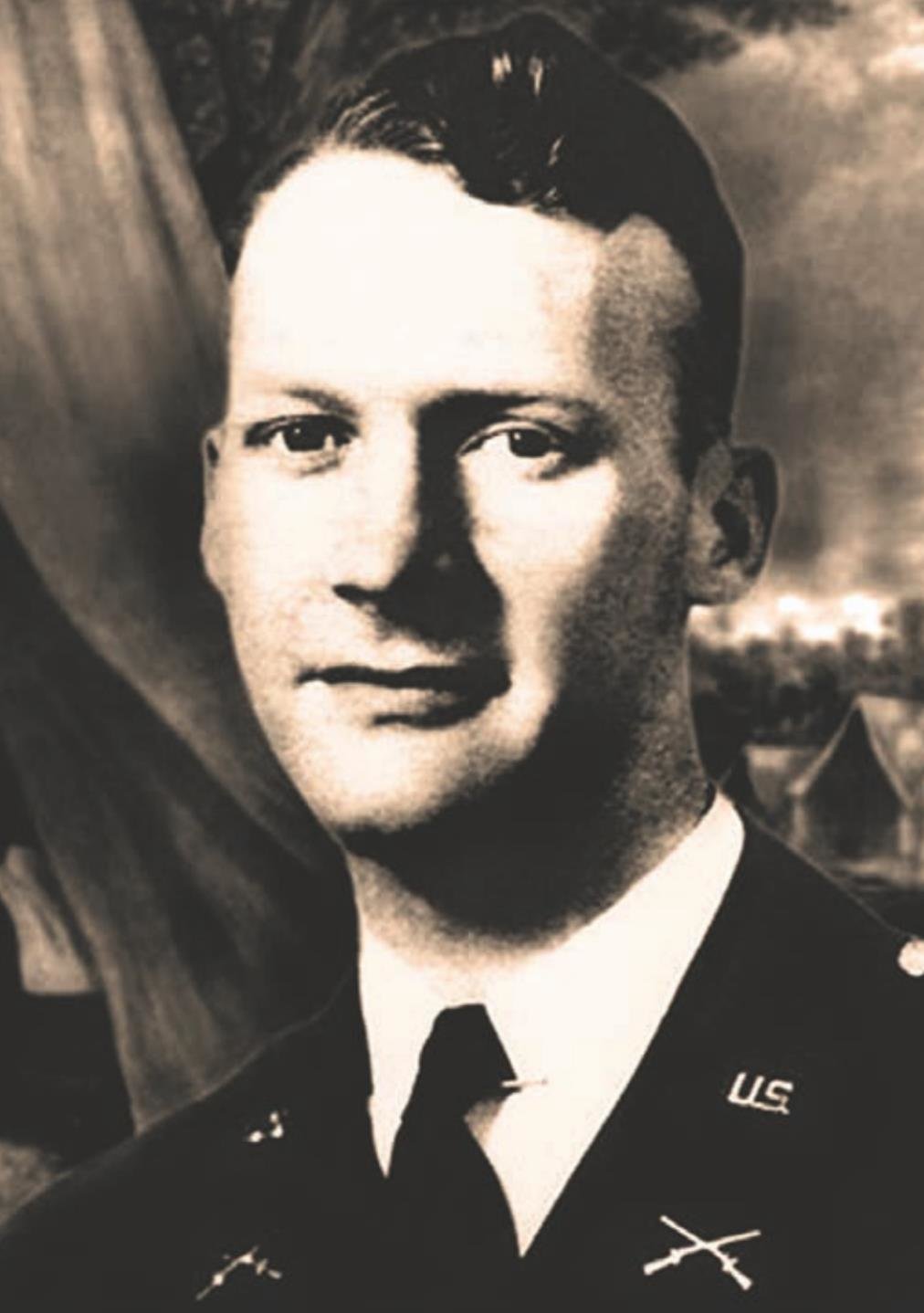America’s missing hero
Nearly 80 years ago this week, the nation’s highest honor was bestowed on one of World War II’s earliest American fatalities.
All these many years later, aftershocks from his death still …
This item is available in full to subscribers.
Subscribe to continue reading. Already a subscriber? Sign in
Get 50% of all subscriptions for a limited time. Subscribe today.
Please log in to continueNeed an account?
|
America’s missing hero
Nearly 80 years ago this week, the nation’s highest honor was bestowed on one of World War II’s earliest American fatalities.
All these many years later, aftershocks from his death still ripple through the military.
Alexander “Sandy” Nininger once told a friend he had no hatred in his heart and doubted he could kill anyone.
Born in Gainesville, Ga., as the first World War was winding down, he grew up in Fort Lauderdale, Fl. Wellliked and involved in school activities, he loved swimming and fishing. At West Point he enjoyed art and the theater. After graduating there in May 1941, he was commissioned a lieutenant in the US Army and ordered to the Philippines.
But Sandy’s career would be tragically short.
Barely 6 months after arriving in Asia, Japan’s sneak attack on Pearl Harbor engulfed the United States in the global conflict that was World War II. Sandy was attached to the Philippine Scouts (57th Regiment Infantry). Days later the war came to him.
When Japanese troops invaded Bataan, Sandy volunteered to serve in another company because his unit was serving behind the lines. Then the 23-year-old officer showed what he was made of.
According to the official citation, Sandy was in the thick of the action near the village of Abucay on January 12, 1942. “Enemy snipers in trees and foxholes had stopped a counterattack to regain part of position. In the hand-to-hand fighting which followed, 2d Lt. Nininger repeatedly forced his way to and into the hostile position.
“Though exposed to heavy enemy fire, he continued to attack with rifle and hand grenades and succeeded in destroying several enemy groups in foxholes and enemy snipers. Although wounded 3 times, he continued his attacks until he was killed after pushing alone far within the enemy position.
“When his body was found after recapture of the position, 1 enemy officer and 2 enemy soldiers lay dead around him.”
It’s believed the man who once doubted he could kill anyone took 50 enemy lives before losing his own.
Just 4 weeks later on February 10, Alexander “Sandy” Nininger became the very first American serviceman of World War II to receive the Medal of Honor. Another 463 would follow, with 266 of them awarded posthumously.
“They needed a hero,” Sandy’s 84-year-old nephew John Patterson told Stars and Stripes recently. “They needed somebody to talk about. They needed help with morale in terms of all the disasters in the Pacific.”
The Army made the most of Sandy’s heroism. Nininger Hall at his alma mater West Point is a cadet barracks. Two transport ships carried his name. Georgia’s Fort Benning has Nininger Range for rifle practice, and the Alexander “Sandy” Nininger State Veterans Hospital is located near his hometown in Florida.
Now, Nininger’s family wants federal officials to remove his name from all of it.
Like many combat fatalities, Sandy was quickly buried in a shallow grave. After the war’s conclusion, he was officially listed as “Missing,” meaning the military didn’t know where he was buried.
Sandy’s sister spent the rest of her life trying to find her brother’s resting place. She passed her life’s mission on to Patterson, her son, who likewise has spent decades pursuing it. He examined records, talked with World War II veterans, and became convinced Sandy is buried under a marker inscribed “Unknown” in grave J-7-20 in the massive Manila American Cemetery and Memorial.
The family has begged the Pentagon to exhume the grave, even offering DNA samples to test against the remains. The military declined. Sandy’s relatives sued, but the case was dismissed in favor of the defendants.
Then on January 12, the 79th anniversary of Sandy’s heroism, the family officially asked the Defense Department to drop Nininger’s name from all government facilities. In a stunning reversal, the Pentagon announced the next day that it will examine the remains buried in that unmarked grave in Manila for testing.
Sandy Nininger was one of the 291,557 Americans who made the ultimate sacrifice for our freedom in World War II. Some 17,000 are still listed as missing. Hopefully, this hero won’t remain “missing” much longer.
Have comments, questions or suggestions you’d like to share with Mark? Message him at jmp.press@gmail.com.
Other items that may interest you










Comments
No comments on this item Please log in to comment by clicking here